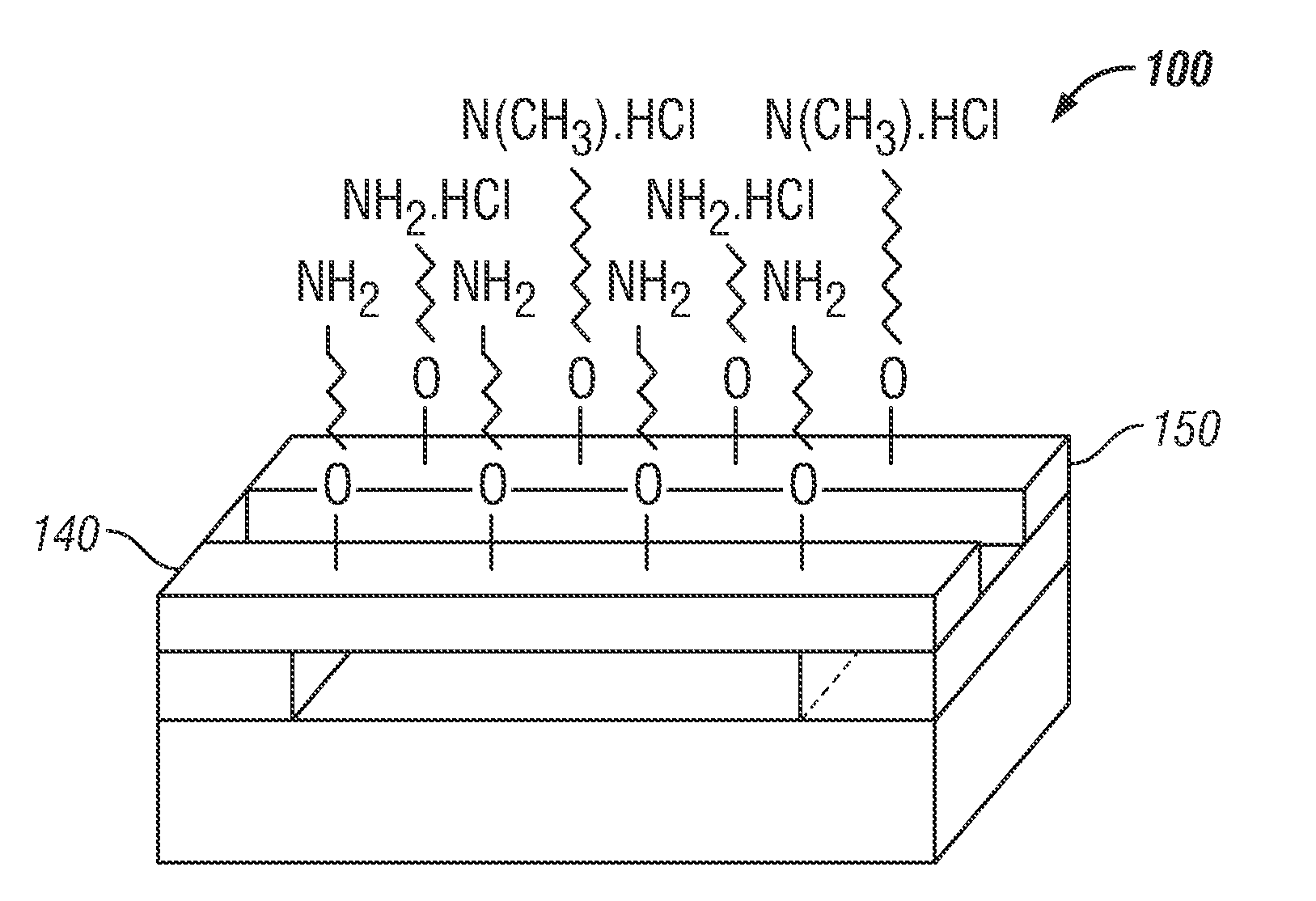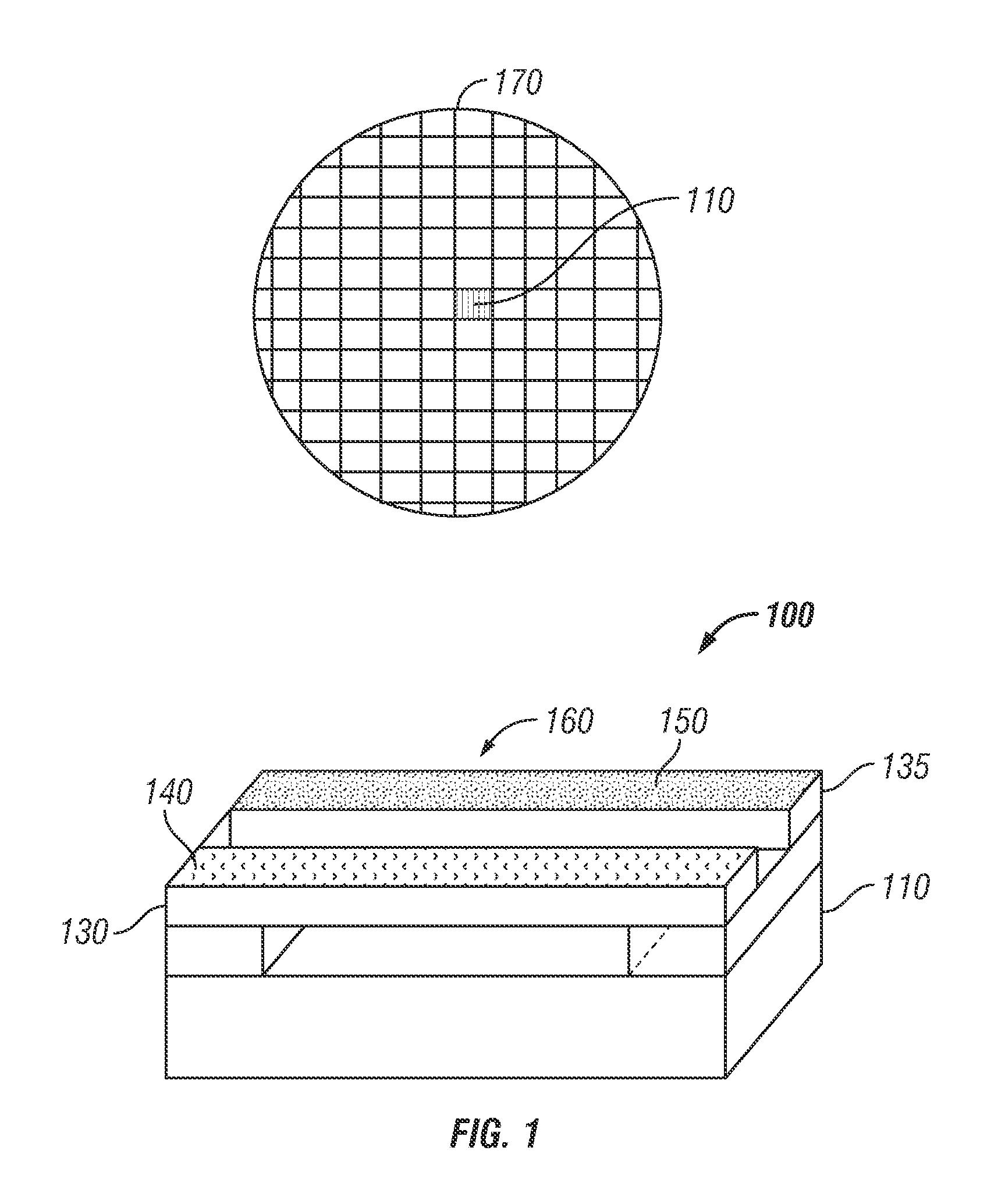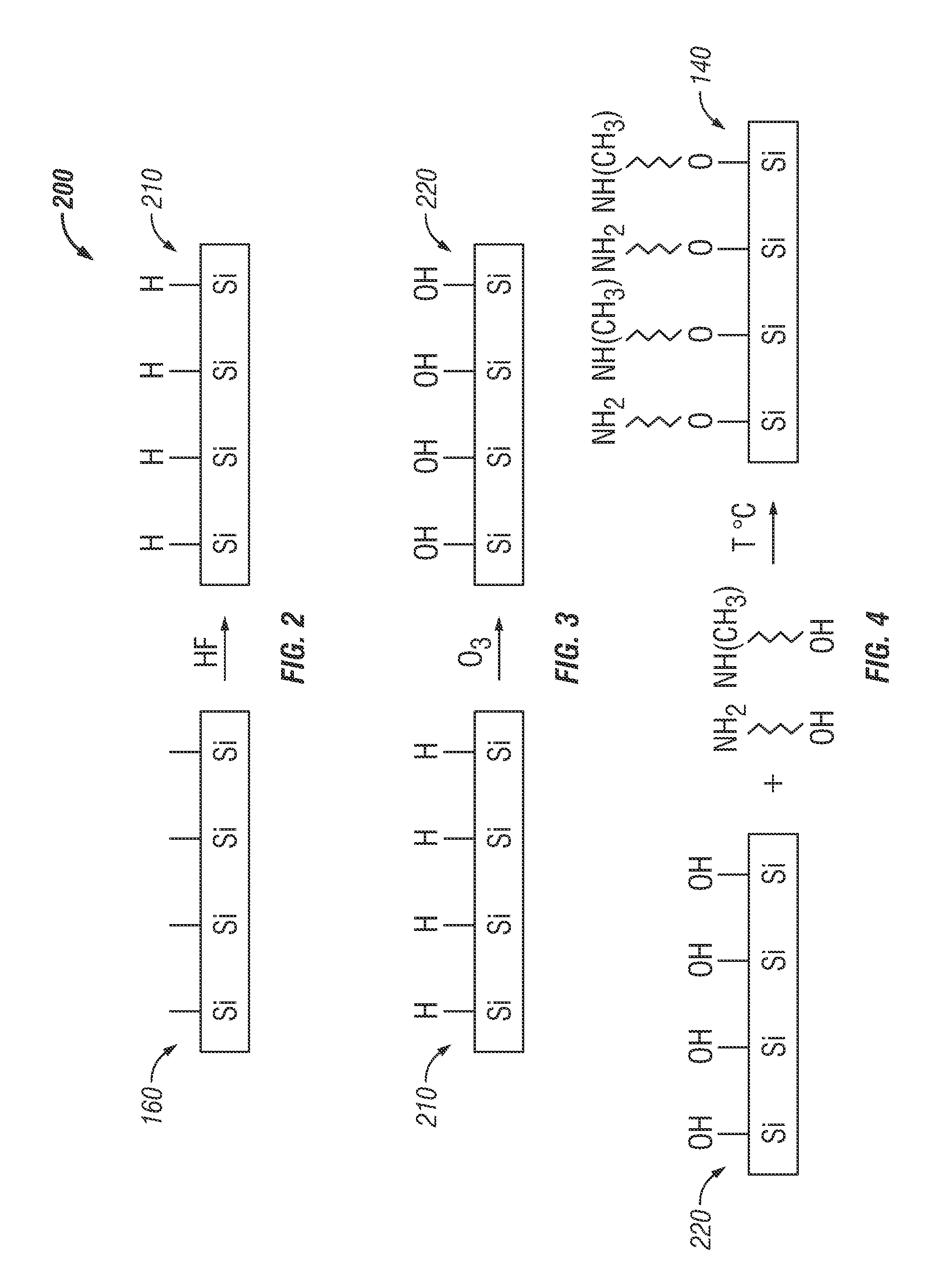Functionalized monolayers for carbon dioxide detection by a resonant nanosensor
a nanosensor and carbon dioxide technology, applied in the field of sensing devices and techniques, can solve the problems of poor drift behavior, low cost of fabricating such sensors for large area cosub>2 /sub>monitoring, and lack of long-term performance stability, so as to facilitate understanding
- Summary
- Abstract
- Description
- Claims
- Application Information
AI Technical Summary
Benefits of technology
Problems solved by technology
Method used
Image
Examples
Embodiment Construction
[0023]The particular values and configurations discussed in these non-limiting examples can be varied and are cited merely to illustrate one or more embodiments and are not intended to limit the scope thereof.
[0024]FIG. 1 illustrates a perspective view of an exemplary resonant nanosensor apparatus 100 and a schematic view of a processed silicon wafer containing a multitude of resonant nanosensor(s) 100, in accordance with the disclosed embodiments. Note that in FIGS. 1-16, identical or similar blocks are generally indicated by identical reference numerals. The resonant nanosensor apparatus 100 with gas detection capability may be employed to detect a gas (e.g. carbon dioxide) by eliminating base line drift issues. The apparatus 100 generally includes a sensing resonant beam 130 and a reference resonant beam 135 located on a chip 110, included in the wafer 170, which contains a multitude of such chips 110. The sensing beam 130 further includes a sensing monolayer 140 and the referenc...
PUM
 Login to View More
Login to View More Abstract
Description
Claims
Application Information
 Login to View More
Login to View More - R&D
- Intellectual Property
- Life Sciences
- Materials
- Tech Scout
- Unparalleled Data Quality
- Higher Quality Content
- 60% Fewer Hallucinations
Browse by: Latest US Patents, China's latest patents, Technical Efficacy Thesaurus, Application Domain, Technology Topic, Popular Technical Reports.
© 2025 PatSnap. All rights reserved.Legal|Privacy policy|Modern Slavery Act Transparency Statement|Sitemap|About US| Contact US: help@patsnap.com



